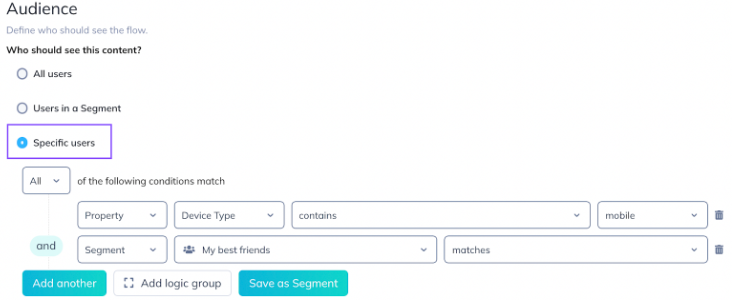Segments vs. Audience Targeting
Learn the differences between using Segments and using Audience targeting.
One of the powerful functionalities in Appcues that you can leverage is to target your flows and other experiences to the right people, and at the right time. We can achieve this by using a Segment, or if we want to be particular with a specific flow; make use of Audience Targeting!
Segments in Appcues are a way to create and manage a group of your users into repeatable conditions that you can use for targeting. All you have to do is create the Segment with the criteria you’d like your users to fall into, and then use this Segment as one entity that represents your group of users. This is created and managed on your ‘Segments’ page in Studio.

What you can also do with Segments is use them to filter the events in your Events Explorer and NPS Analytics dashboard so you can properly monitor the performance of your users in the Segment with the events and NPS responses in your application.
Audience Targeting, on the other hand, is only a targeting criteria that are specific to a flow or checklist. This is when you’d like to have more control over who gets to see a particular flow/checklist. When creating, you’re allowed to target specific users that may not be part of a Segment you’ve created. For flows, this can be found under ‘Audience’ in your flow settings page and selecting the ‘Specific users’ option.

It’s worth noting that this is only carried out as a flow-specific setting so if you want to be able to reuse this for future flows/checklists, then saving it as a Segment would be more efficient!
In summary, while you’re able to add the same conditions for both Segments and Audience Targeting, Segments allow you to easily reuse these conditions in future flows/checklists without having to recreate the conditions as well as extend the ability to filter your analytics in the Events Explorer and NPS; Audience Targeting is for when you want to be granular with who sees a particular flow or checklist!